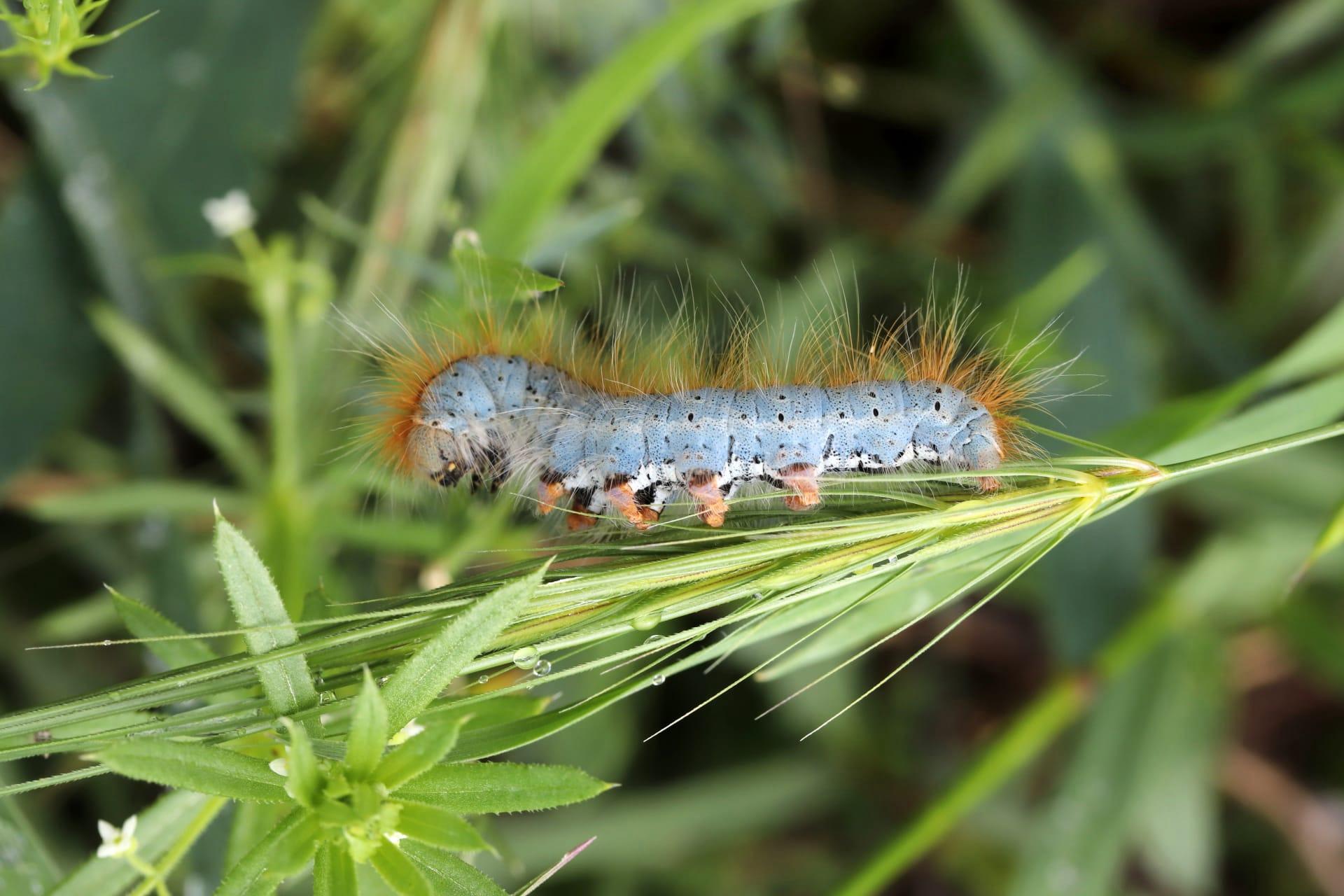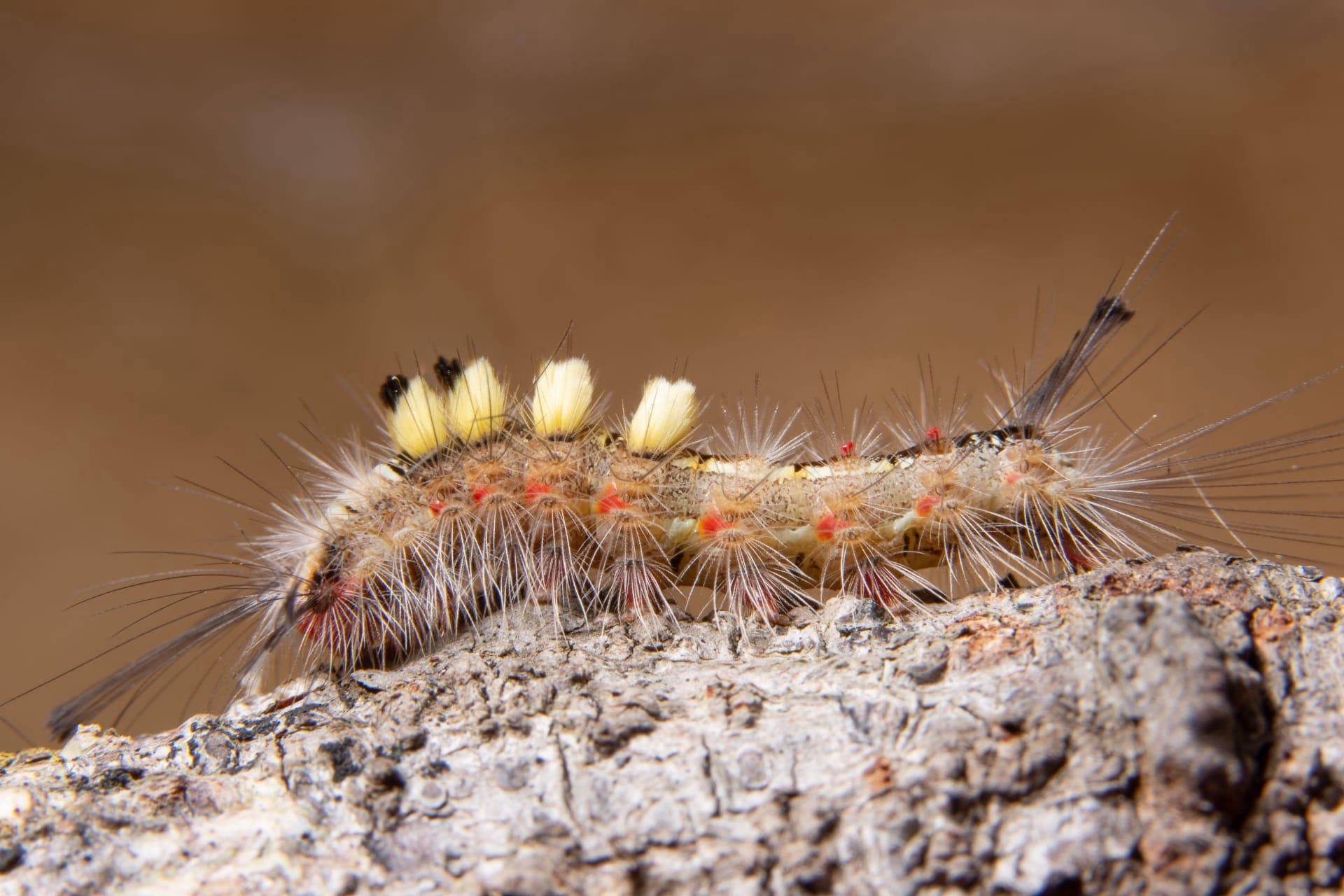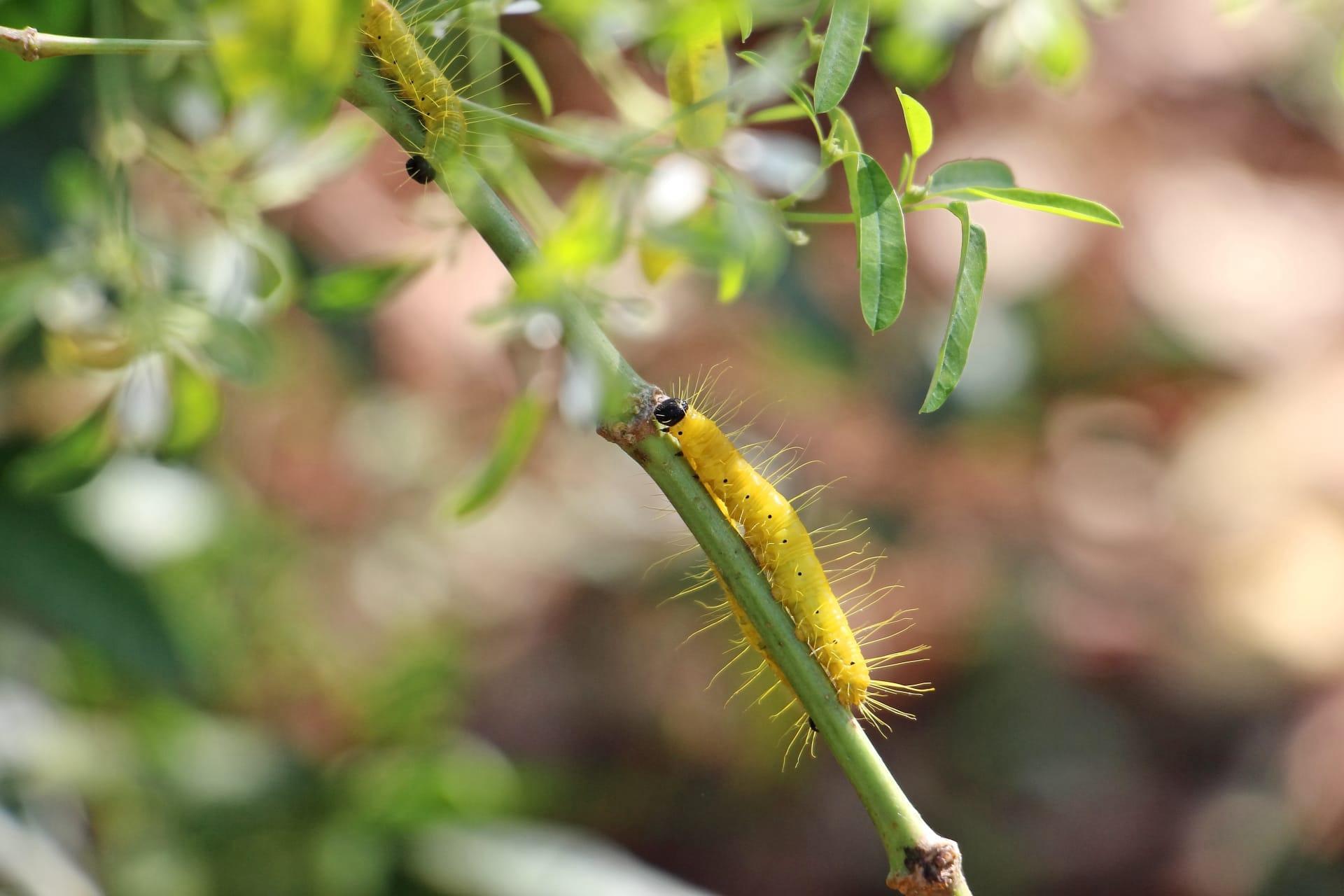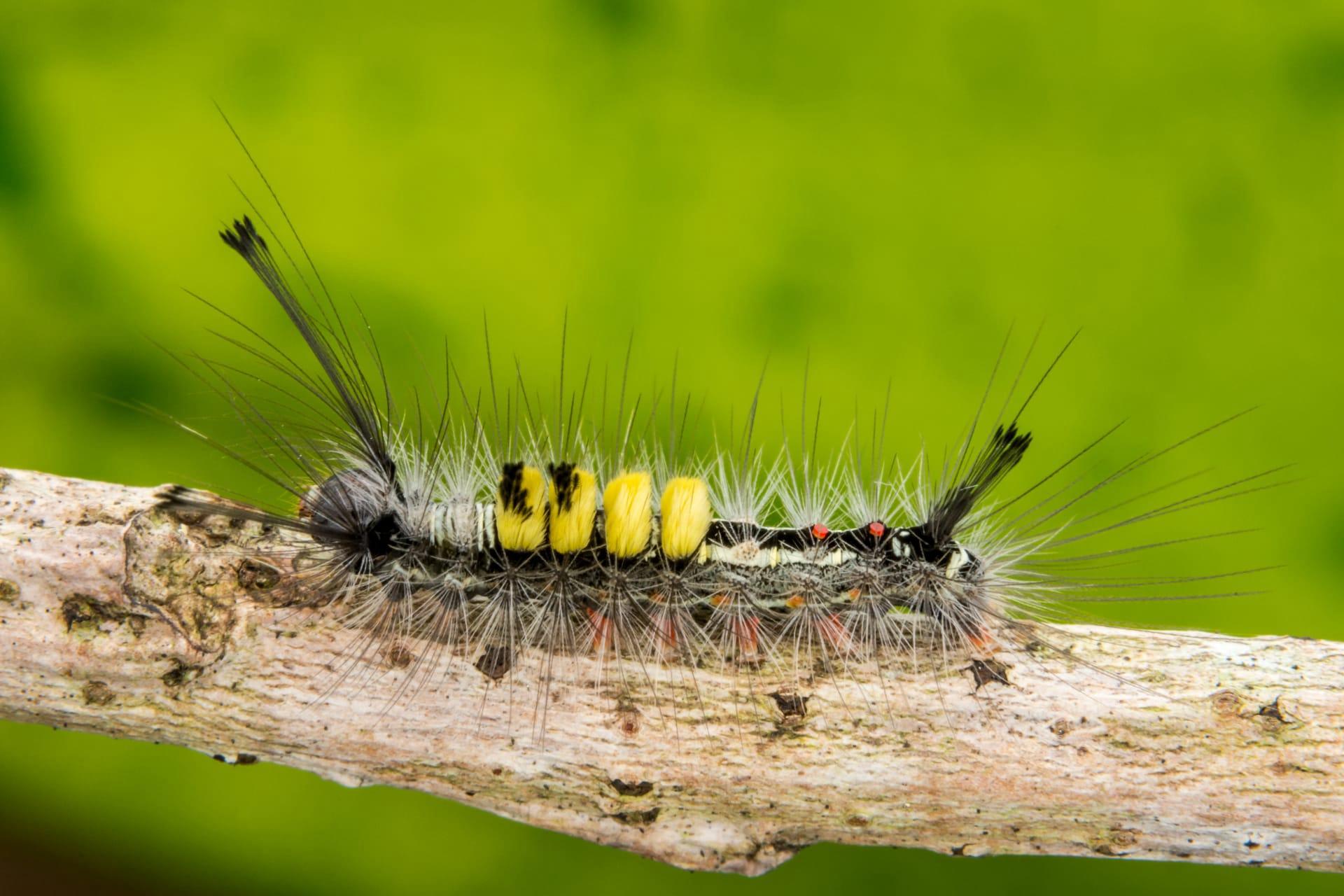Poisonous Caterpillar Characteristics
- Home /
- Mini Encyclopedia /
- Animal /
- Poisonous Caterpillar Characteristics
1
Picture a caterpillar, small and intriguing, but the Poisonous Caterpillar is a creature with a twist. These caterpillars generally measure between 1 to 2 inches in length. Their lifespan, surprisingly short, typically spans only a few weeks to months, depending on the species and environmental conditions. They possess a fascinating array of colors and patterns, a nature-designed warning for predators.
Now, let's zoom in on their most distinct feature: the bristles or setae. These are not just for show; they are loaded with toxins. When touched, these bristles break off and can embed in skin, releasing toxins. The result? A range of reactions, from mild irritation and itching to severe pain, rash, nausea, and even difficulty breathing in some cases. This defense mechanism is their unique adaptation for survival in the wild.

2
Question: What should you do if you come into contact with a Poisonous Caterpillar?
Answer: First, don't panic. Gently remove any bristles stuck in the skin using tape or a cold compress. Avoid touching the area with bare hands to prevent further irritation. Wash the area thoroughly with soap and water. Applying hydrocortisone cream or calamine lotion can alleviate itching and swelling. If you experience severe reactions like difficulty breathing or excessive swelling, seek medical attention immediately. Remember, it's always better to admire these creatures from a distance.

3
Poisonous Caterpillars are not just about their menacing bristles; they have intriguing movement characteristics too. These caterpillars typically move in a gliding, wave-like motion. This movement is facilitated by their prolegs, which are found on the underside of their bodies and work in harmony with their true legs.
When it comes to dining, these caterpillars are pretty picky. They primarily feed on leaves from specific host plants, which varies among species. Their eating habits are voracious, often stripping entire branches bare. This high consumption rate is crucial for their rapid growth and development into moths or butterflies.

4
The habitats of Poisonous Caterpillars are as diverse as their appearance. They are found in a variety of environments, ranging from dense forests to urban gardens. However, they thrive best in areas with abundant vegetation, which provides both food and protection. Climate plays a significant role in their distribution, with most species preferring warmer and humid conditions.
Reproduction is a fascinating aspect of their life cycle. After metamorphosis, the adult moths or butterflies lay eggs on the underside of leaves. These eggs hatch into caterpillars, which eventually undergo metamorphosis to continue the cycle. The number of eggs laid and the time taken for them to hatch can vary greatly among species.

5
Book: "The Hidden World of the Caterpillar" by Sarah Johnson, published in the USA in 2015. This captivating book dives into the secret life of caterpillars, including the poisonous varieties. Johnson's narrative is filled with vivid descriptions of their life cycle, habitat, and unique defense mechanisms. It's an enlightening read for anyone curious about these often misunderstood creatures.
Book: "Caterpillars: Nature's Tiny Mysteries" by David Attenborough, published in the UK in 2018. Attenborough, a renowned naturalist, explores the intricate world of caterpillars, with a special focus on the poisonous species. The book combines stunning photography with insightful commentary, providing a comprehensive look at the ecological role and survival strategies of caterpillars.